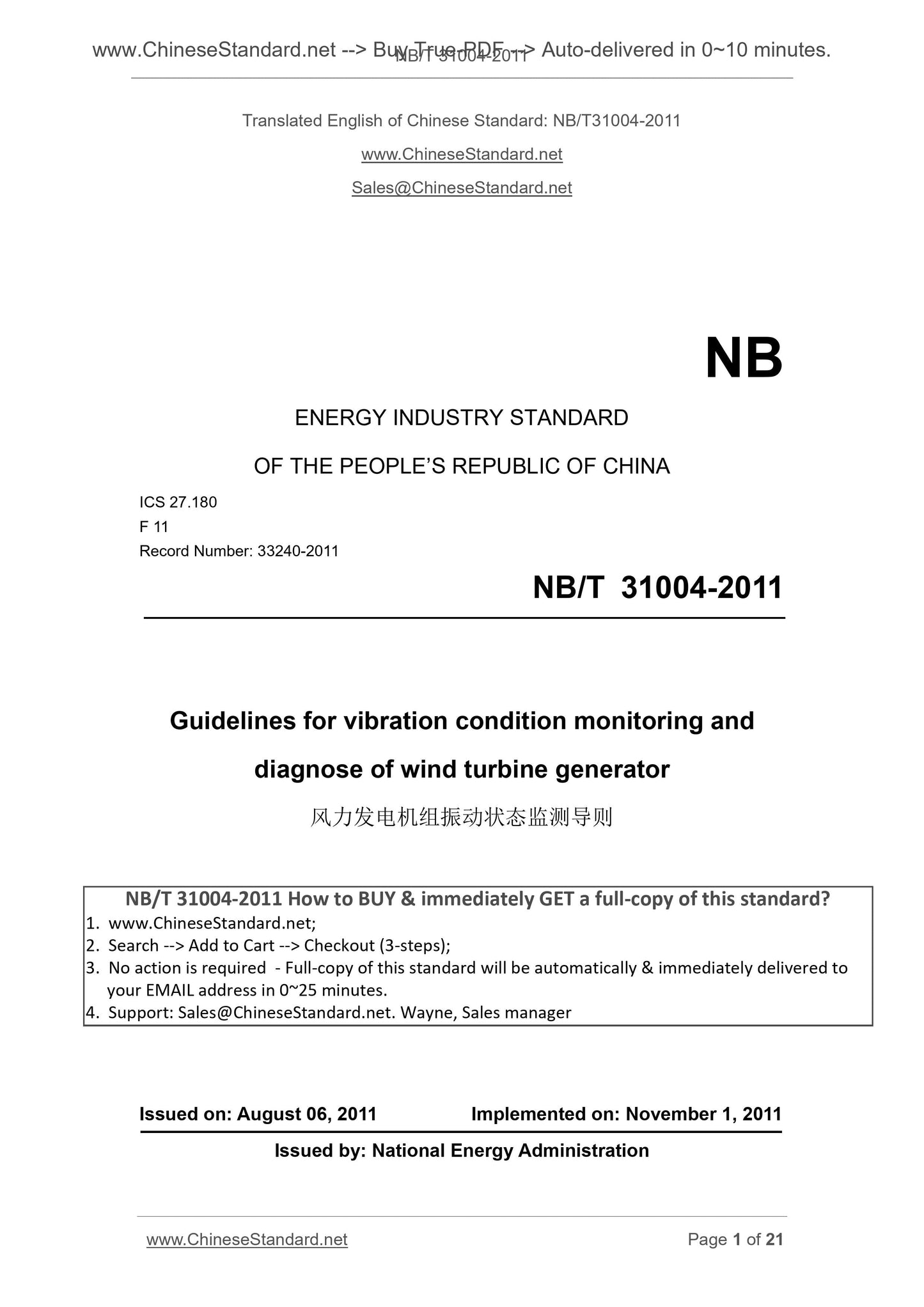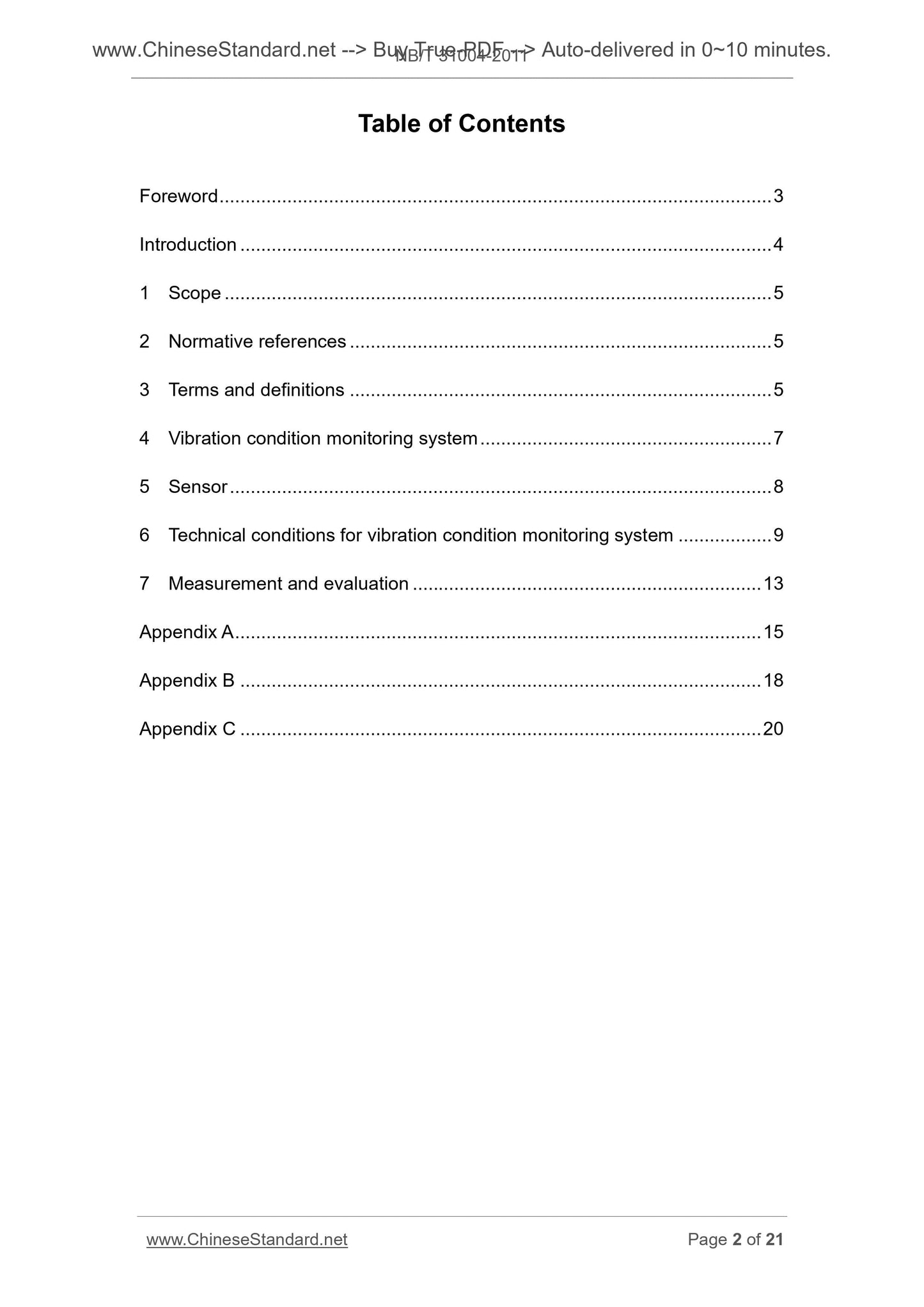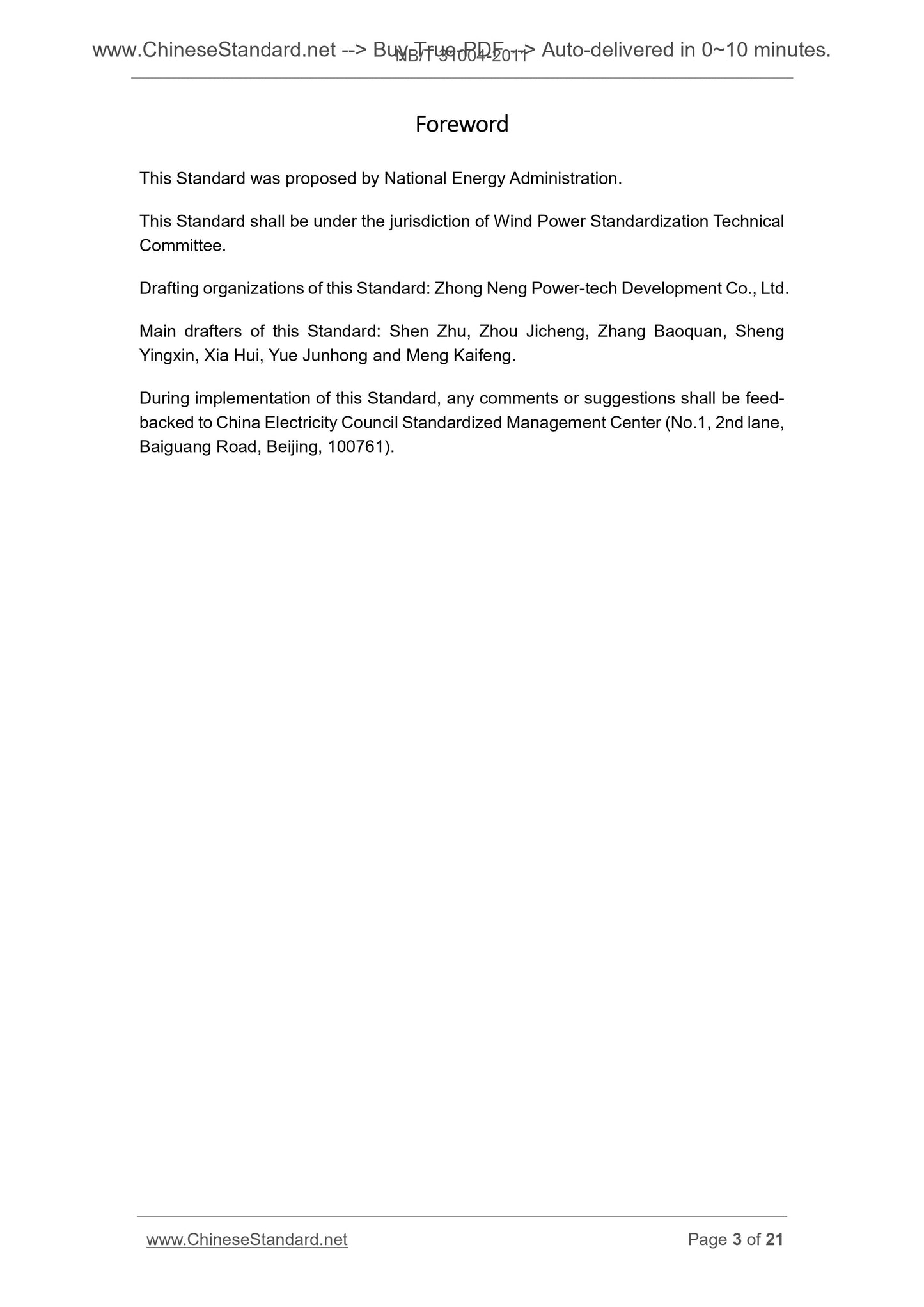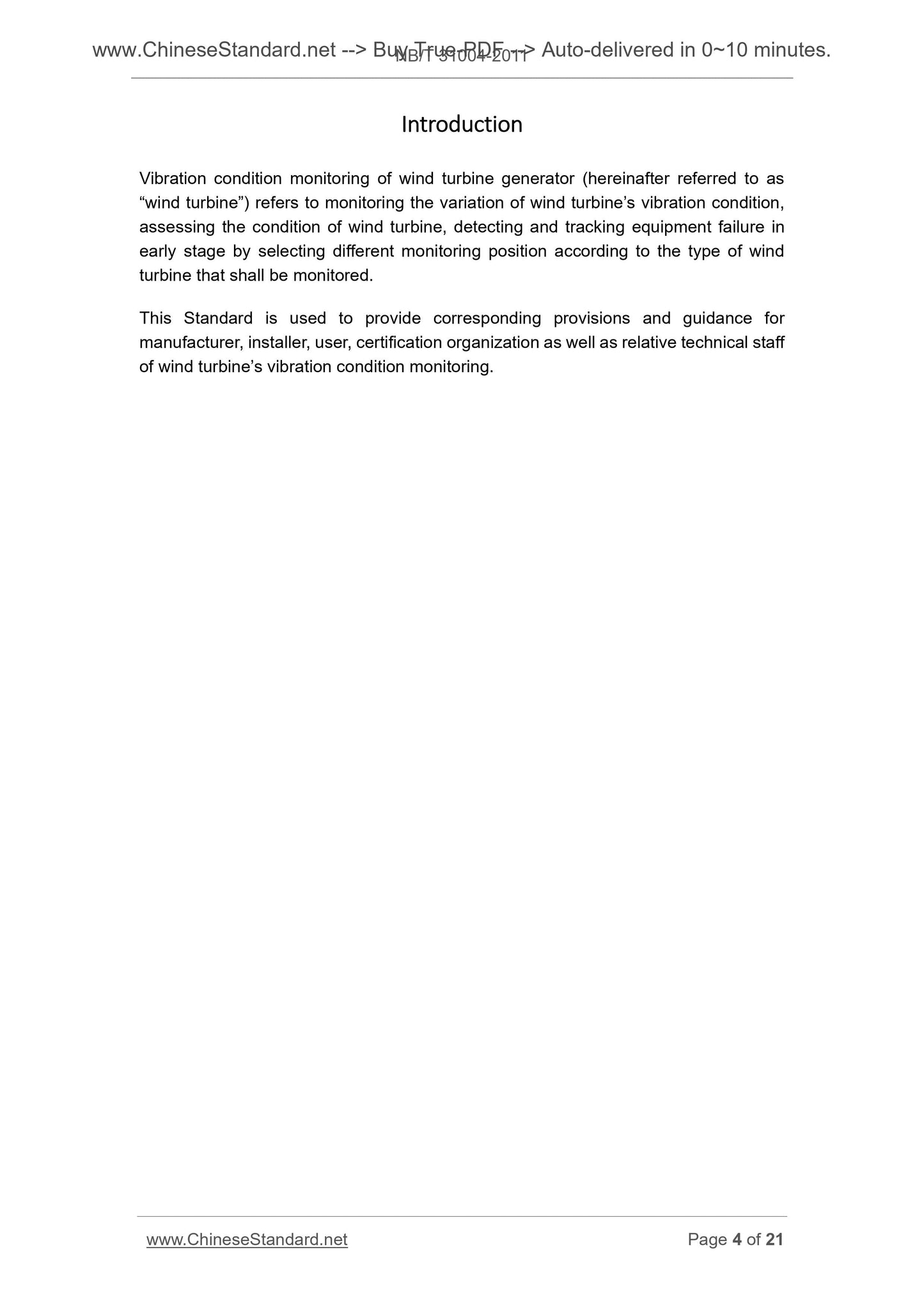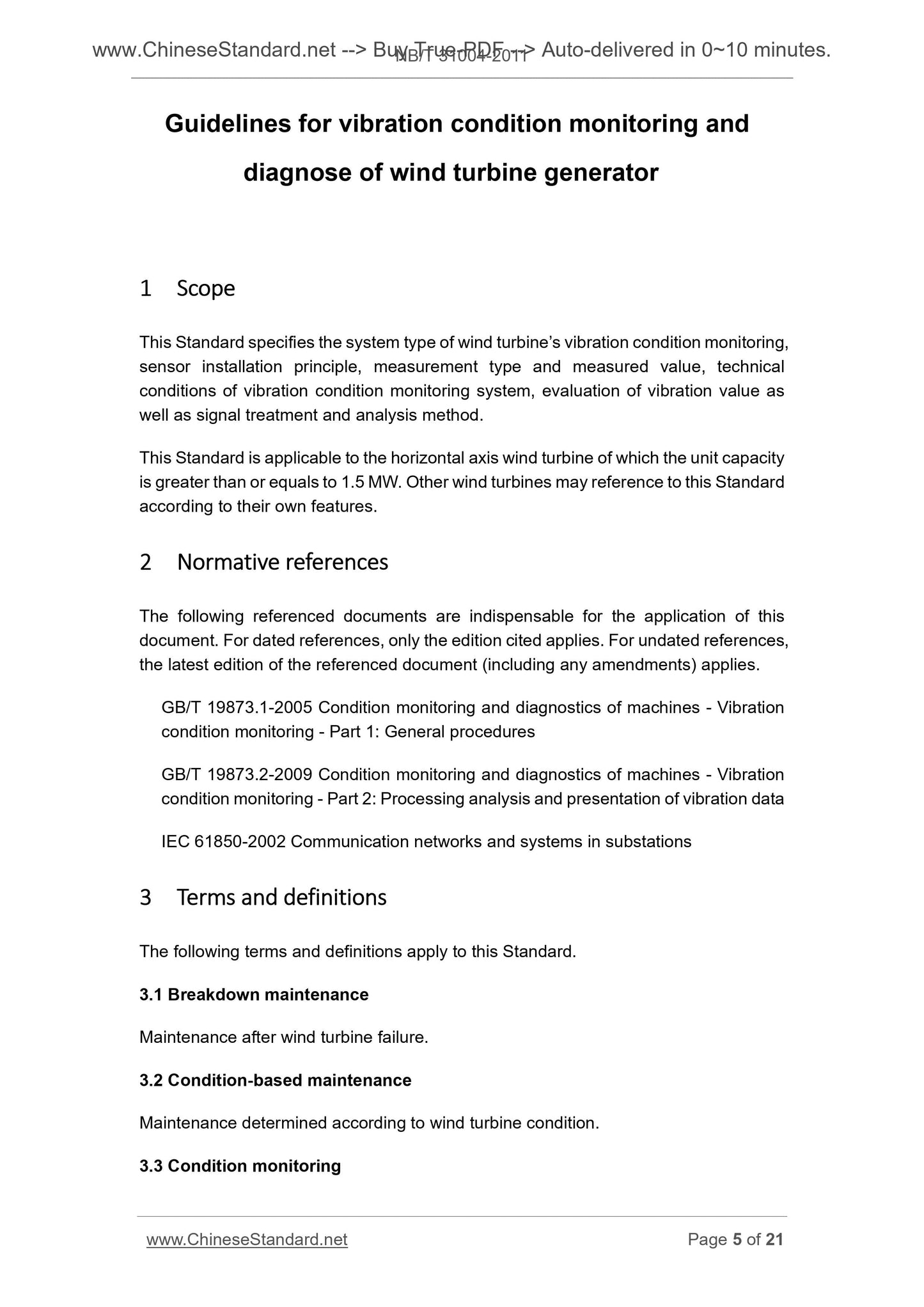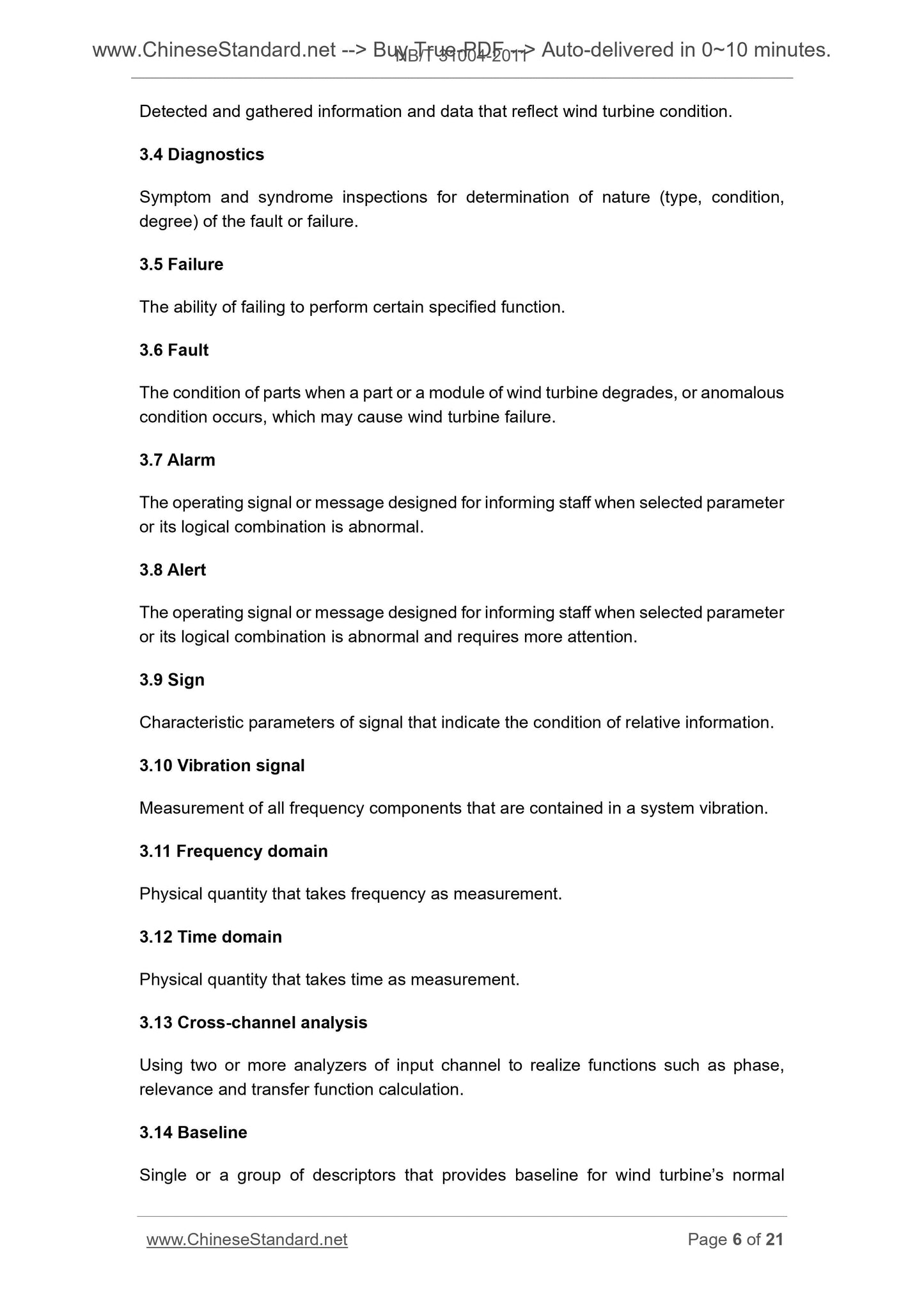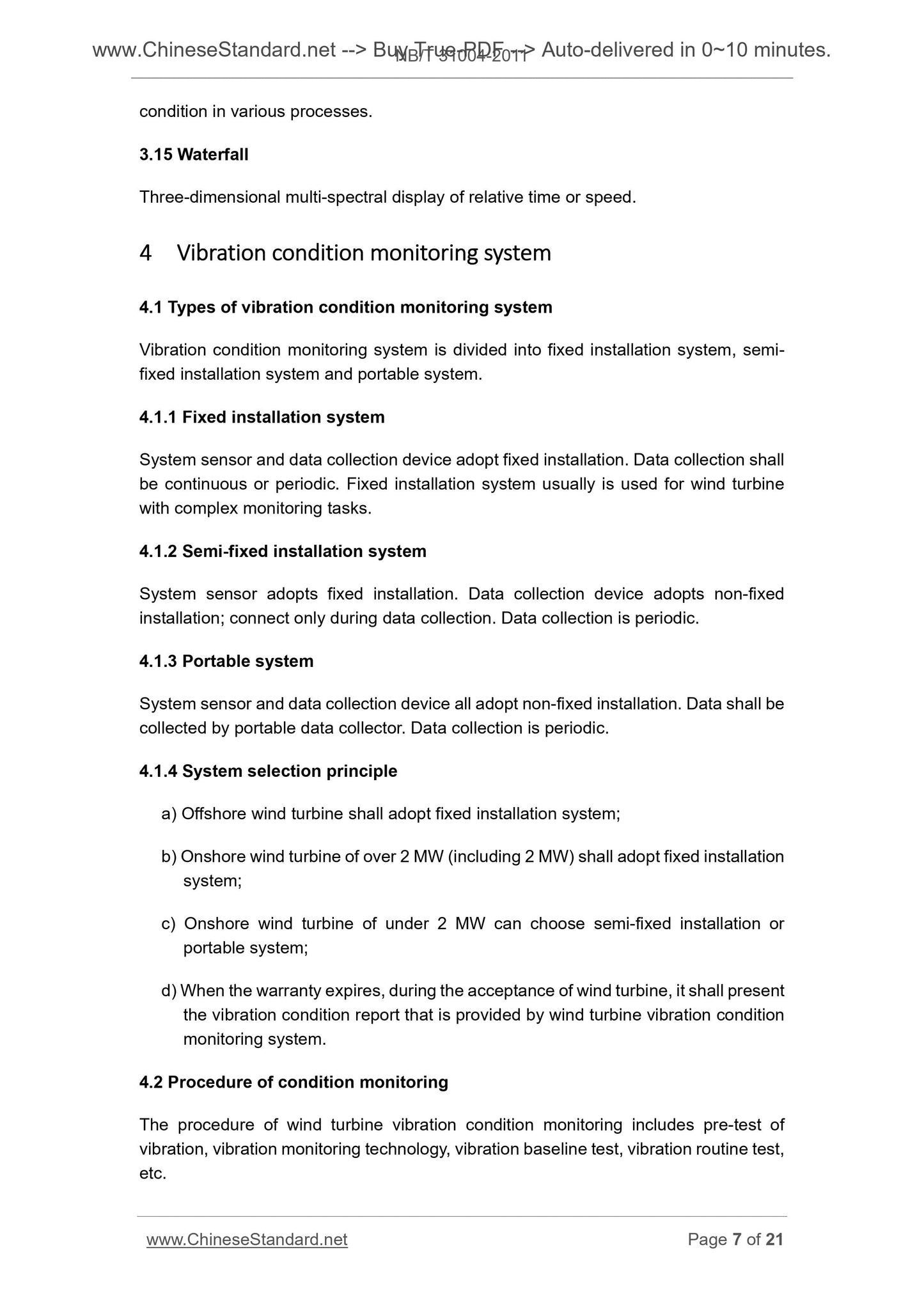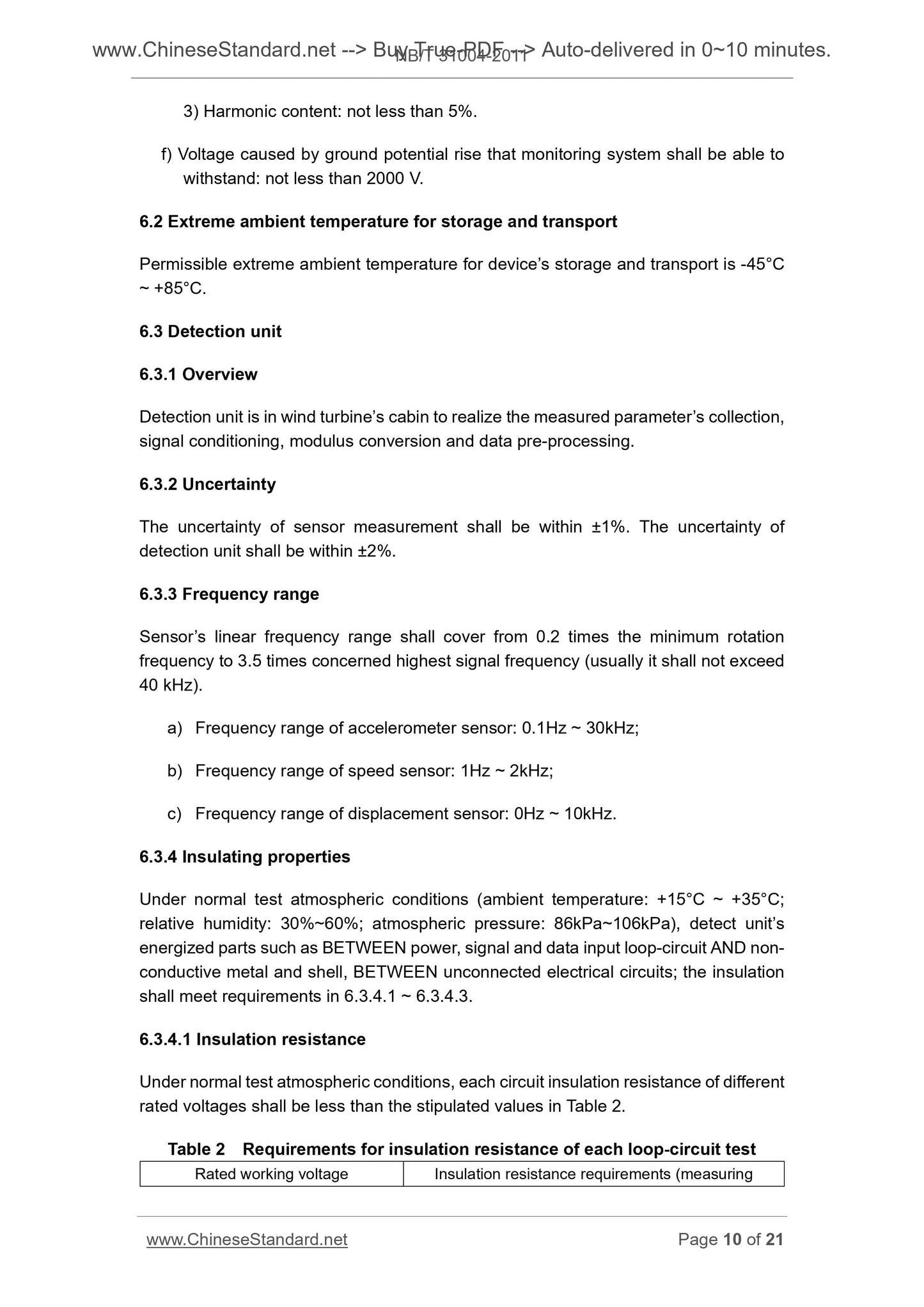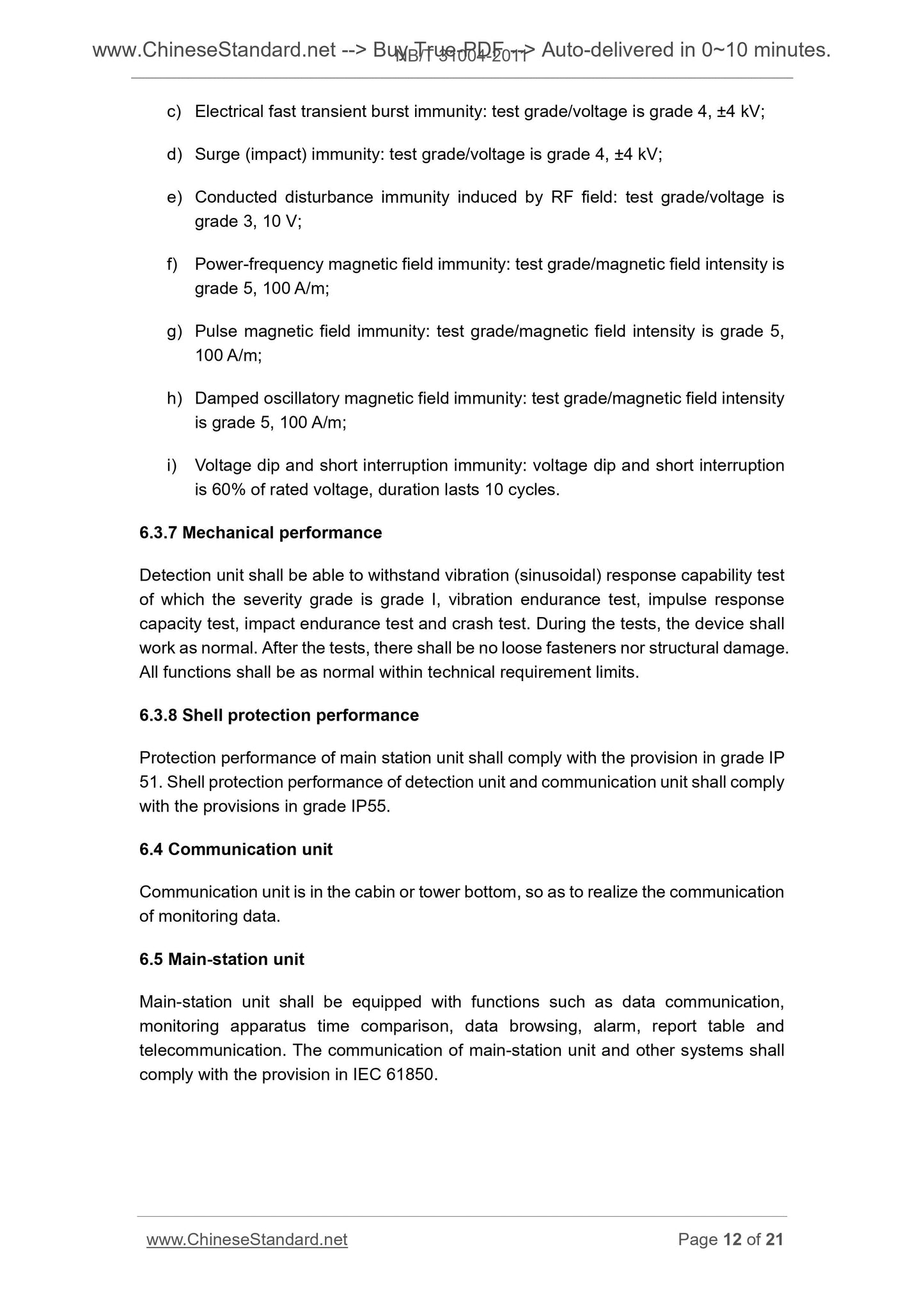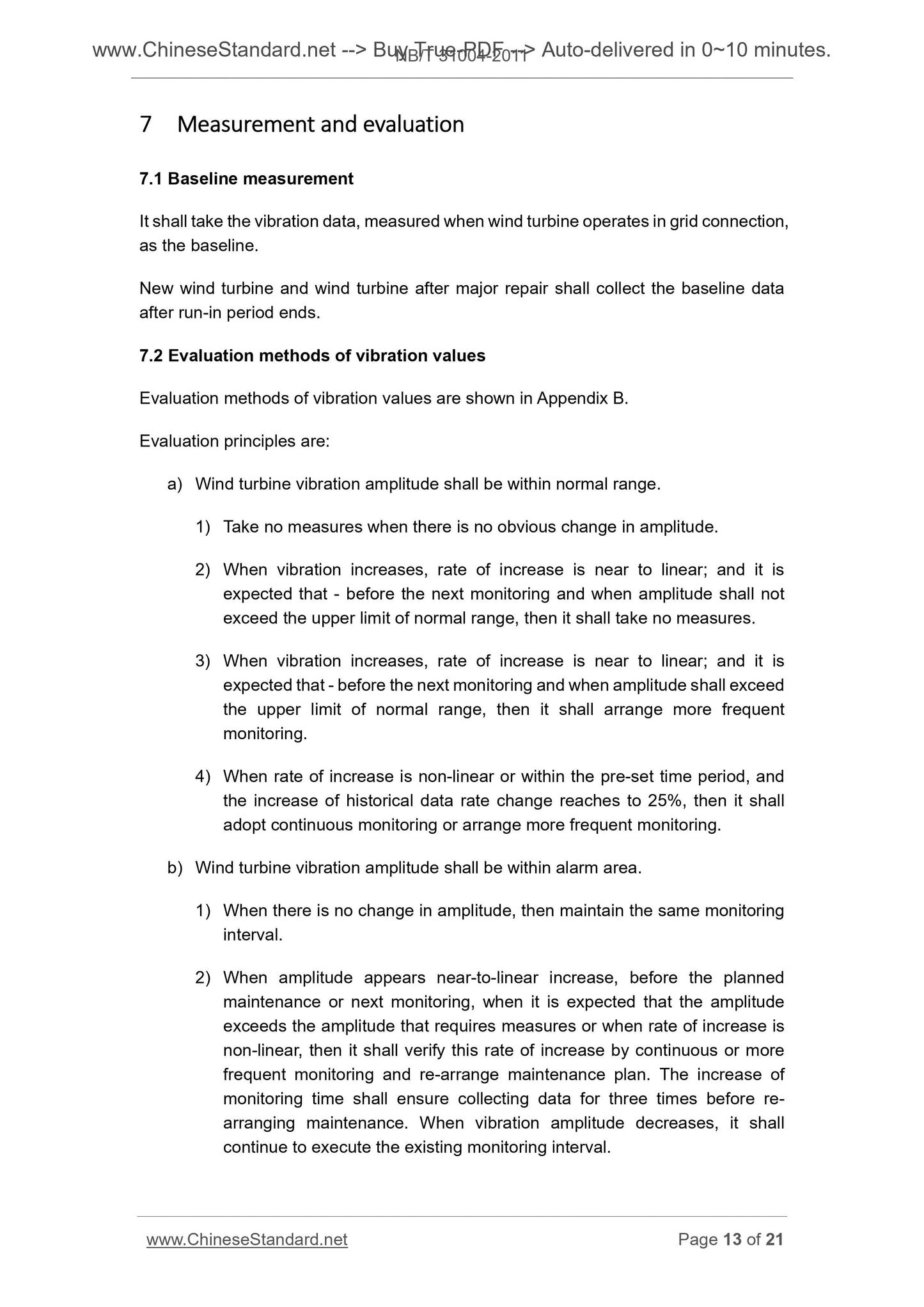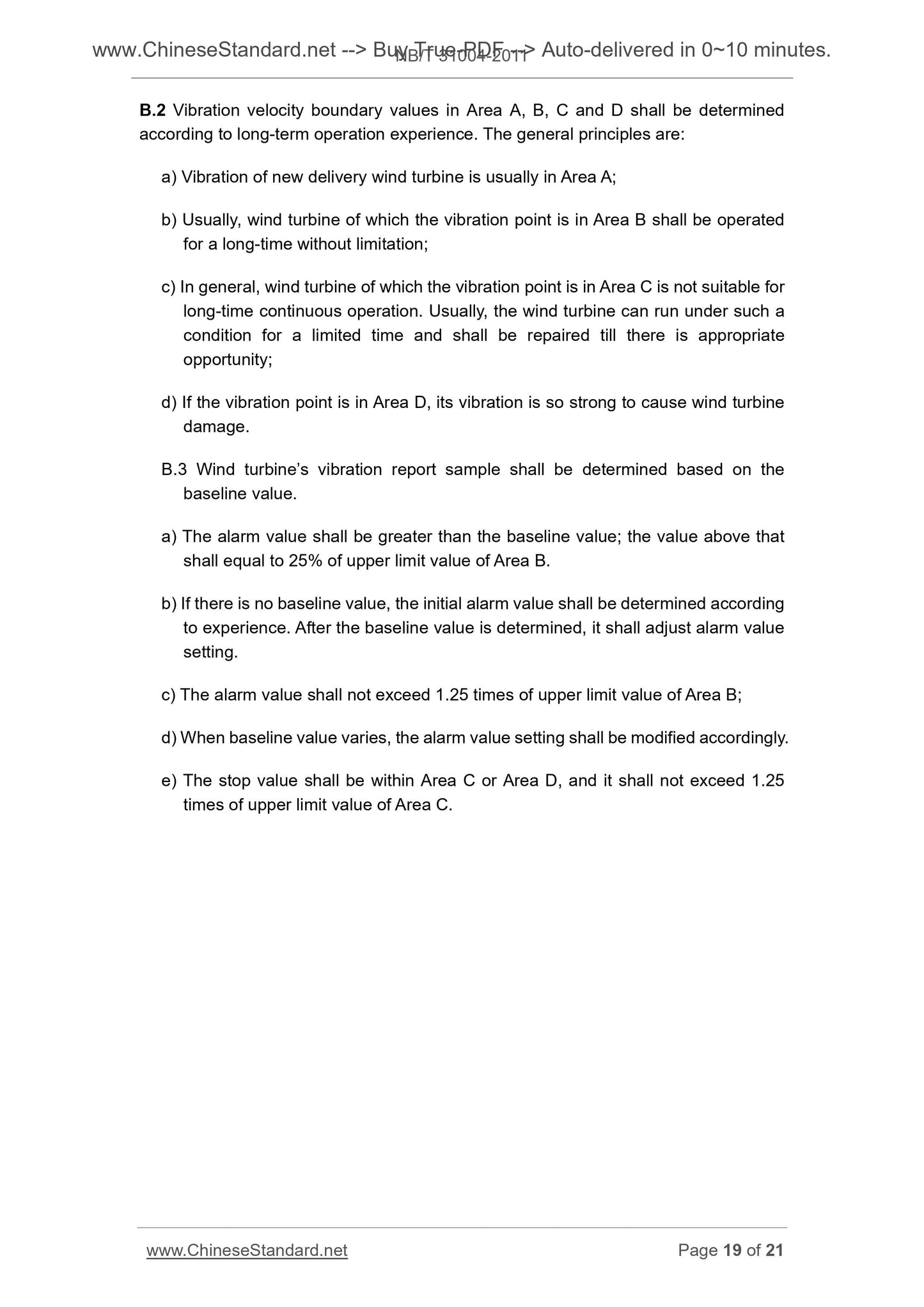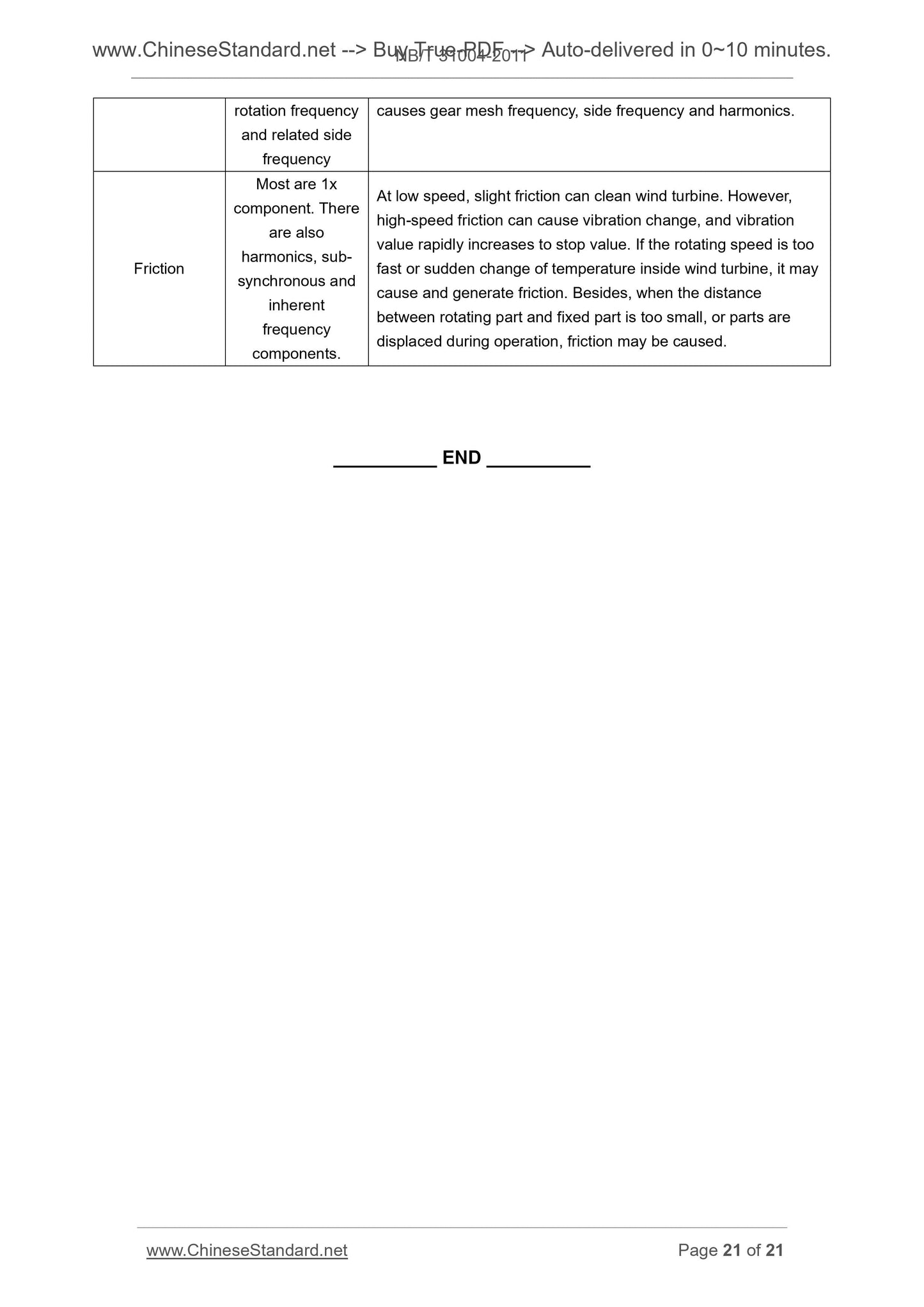1
/
of
12
www.ChineseStandard.us -- Field Test Asia Pte. Ltd.
NB/T 31004-2011 English PDF (NB/T31004-2011)
NB/T 31004-2011 English PDF (NB/T31004-2011)
Regular price
$125.00
Regular price
Sale price
$125.00
Unit price
/
per
Shipping calculated at checkout.
Couldn't load pickup availability
NB/T 31004-2011: Guidelines for vibration condition monitoring and diagnose of wind turbine generator
Delivery: 9 seconds. Download (and Email) true-PDF + Invoice.Get Quotation: Click NB/T 31004-2011 (Self-service in 1-minute)
Newer / historical versions: NB/T 31004-2011
Preview True-PDF
Scope
This Standard specifies the system type of wind turbine’s vibration condition monitoring,sensor installation principle, measurement type and measured value, technical
conditions of vibration condition monitoring system, evaluation of vibration value as
well as signal treatment and analysis method.
This Standard is applicable to the horizontal axis wind turbine of which the unit capacity
is greater than or equals to 1.5 MW. Other wind turbines may reference to this Standard
according to their own features.
Basic Data
| Standard ID | NB/T 31004-2011 (NB/T31004-2011) |
| Description (Translated English) | Guidelines for vibration condition monitoring and diagnose of wind turbine generator |
| Sector / Industry | Energy Industry Standard (Recommended) |
| Classification of Chinese Standard | F11 |
| Classification of International Standard | 27.180 |
| Word Count Estimation | 16,169 |
| Date of Issue | 2011-08-06 |
| Date of Implementation | 2011-11-01 |
| Quoted Standard | GB/T 19873.1-2005; GB/T 19873.2-2009; IEC 61850-2002 |
| Regulation (derived from) | ?National Energy Board Announcement 2011 No.5 |
| Issuing agency(ies) | National Energy Administration |
| Summary | This standard specifies the wind turbine vibration monitoring system types, sensor installation guidelines, vibration assessment and signal processing and analysis methods, vibration condition monitoring system technical conditions, measurement type and value. This standard applies to single 1. 5MW capacity greater than or equal to the horizontal axis wind turbine. Other wind turbine according to its own characteristics with reference to use. |
Share
